Specificity: The most over-rated training principle?
Alan Couzens, M.Sc.(Sports Science)
Feb 20, 2019
Pictured: Bjorn Daehlie, the greatest cross country skier of all time (& one of the highest reported VO2 max numbers - 96 ml/kg/min) also had a 30:31 10K and sub 2:00 800m run to his name!
The principle of specificity states that..
"the adaptation of the body or the change in physical fitness is specific to the type of training undertaken.".
In the words of Dr. Brent Rushall - "this principle applies to both the movements and energy systems of the sport." At first pass, this makes intuitive sense...Read >
Planning your altitude training 'dose'
Alan Couzens, M.Sc. Sports Science
Feb 6, 2019
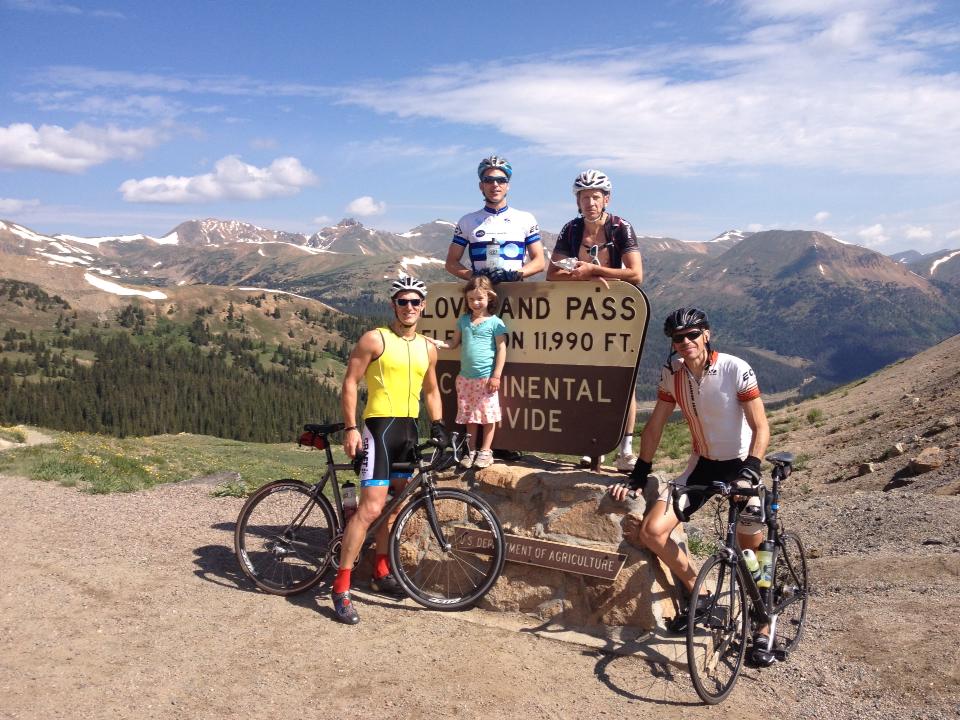
Just us and the mountain goats :) - me and some fellow crazies getting the work done up high (& having a great time in the process!)
It seems that over the past couple of years, the interest in the use of altitude training has really increased. Perhaps it's because I'm an exercise physiologist who calls the highest state in the nation home (mean altitude of 2000m/6600ft), but the number of athletes..Read >
How to turn yourself into a Fat-Burner
Part 1: What Science Says...
Alan Couzens, M.Sc. (Sports Science)
Orig. published: May 25, 2008 Updated: Jan 9 2019

Pictured: Inaki, clearly in 'fat burning machine' mode! Regular metabolic testing is a big part of improving your fat-burning ability over the long term.
This post is going to be a little different to my previous posts on the merits and methods of getting your fat-burning tested. Hopefully by now, you’re as convinced as I am that the ability to utilize fat as a substrate...Read >
What I learned this year - 2018 edition.
Alan Couzens, M.Sc.(Sports Science)
Dec 12, 2018
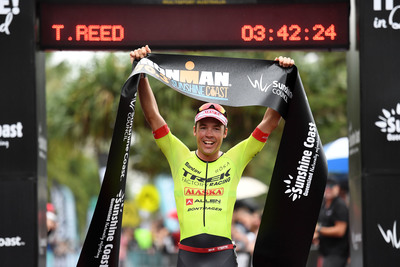
2018 was a good year. After a couple of roller coaster seasons with the crew, it was nice to return to a little more stability this year. Of course, in the high-performance triathlon game, stability is a relative term :-) Read >
Reflections on working with different athlete personality types.
Alan Couzens, M.Sc.(Sports Science)
Dec 4, 2018

Admittedly, this one is a bit out of left field. But, as you have probably figured by now, I am a guy with a love for trying to figure out complex systems and there is no more complex system than the human mind! Read >
Using Run Power to pace you to your fastest Ironman
Alan Couzens, M.Sc.(Sports Science)
Nov 8, 2018
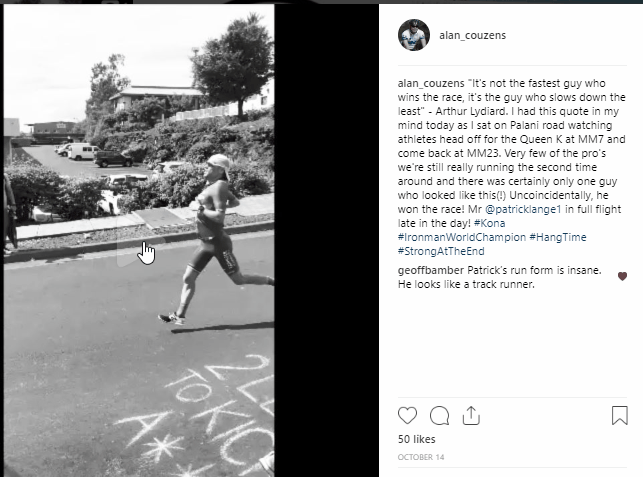
Ironman World Champion, Patrick Lange, pushing some big watts (~4.3 w/kg!) late in the day on the run!
As I watched this year's Ironman World Championships from Palani hill, there was a period when I got really hot, so I decided to sit on the curb for a bit (spectating is hard work! :-) From this prime position of 'foot-level'.. Read >
The most important Ironman training block:
'The Big Push'.
Alan Couzens, M.Sc.(Sports Science)
Sep 19, 2018

“8 weeks before the Hawaii Ironman, Mark Allen begins the ‘push’ phase of his training. This consists of four hard weeks of training followed by a 4 week taper. During this time, Allen doesn’t race at all. This period of training is, in my view, the most taxing training ever performed by a human, exceeding even that of the Kenyans” – Tim Noakes (Lore of Running) Read >
Optimizing the training plan for the individual athlete.
Alan Couzens, M.Sc.(Sports Science)
Sep 14, 2018

I received quite a few follow up questions after my last post on determining whether you are a volume or intensity ‘responder’. The questions had a common theme – “OK, so I’ve worked out what category I belong to. Now what?” Read >
Beyond Training Load:
Are you a volume or intensity responder?
Alan Couzens, M.Sc.(Sports Science)
Aug 21, 2018

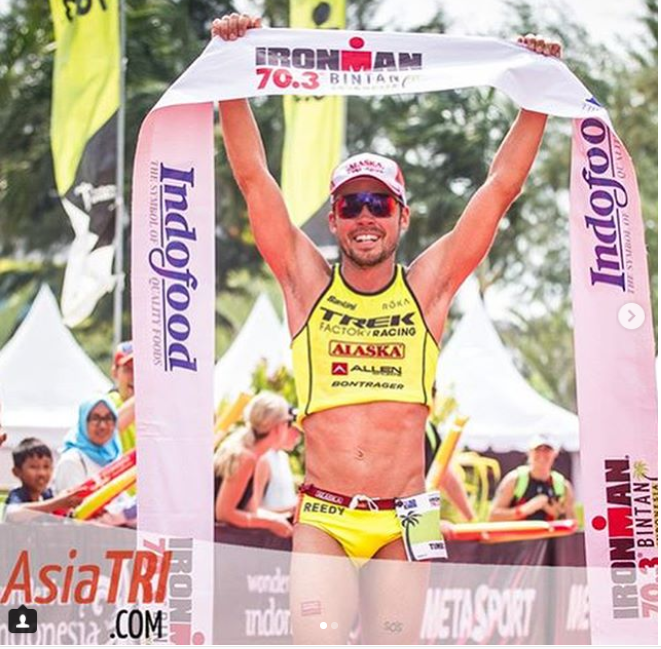
The further along I get in this coaching journey and the more different types of athlete that I have the opportunity to work with, the more truth I find in the principle of individuality. Read >
Why Neural Networks are better than the old Banister/TSS model at predicting athletic performance.
Alan Couzens, M.Sc.(Sports Science)
July 26, 2018
Tough to ignore the numbers. For 13 of 15 athletes I looked at, a simple single hidden layer #NeuralNetwork provides a much better predictive performance model than the old Bannister/TSS model. Especially for high fitness athletes. pic.twitter.com/cLEl5h4cQJ
— Alan Couzens (@Alan_Couzens) July 7, 2018
I received a lot of follow up qu’s/discussion from this tweet on how I’m seeing Neural Networks consistently out-perform the Banister model (the model behind Training Peaks' Performance Management Chart) as a performance predictor for the vast majority of athletes. Read >
Optimal nutrition & hydration for hot weather races…
Alan Couzens, M.Sc. (Sports Science)
Sept 18th, 2014 (Updated: June, 16, 2018)
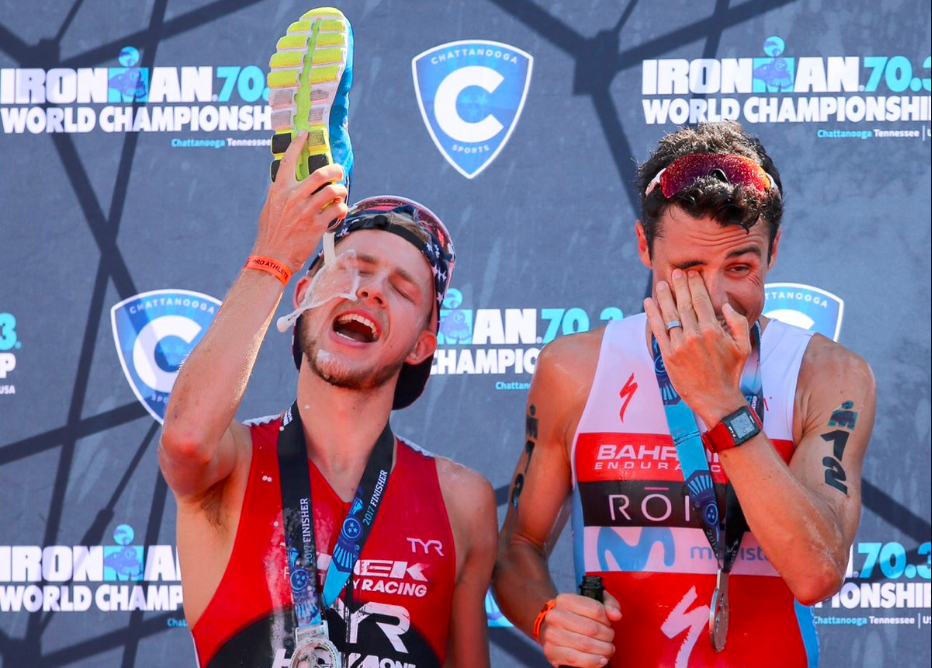
Sometimes you have to do what you have to do to get the fluid in but this is probably not 'optimal' :-)
Some of the common themes here at EC are nutrition for health and nutrition for performance. Our editor was right to point out that these two topics are often distinct and perhaps even counter to one another. However, one situation in which they are very much linked is nutrition and hydration. Read >
Benchmarks:
Stepping stones to balanced athletic development
Alan Couzens, M.Sc (Sports Science)
Apr 12, 2018

"Better learn balance. Balance is key. Balance good, karate good. Everything good. Balance bad, better pack up, go home. Understand?" - Mr. Miyagi
“Coach, how are we doing? Are we on track?”, “Coach, what do we need to work on?” These are two of the most frequent & important(!) questions we are asked as coaches. And in some sports, like Ironman triathlon, these questions are quite a bit tougher to answer than in a lot of other sports. Read >
Camp like a Pro:
Some thoughts on avoiding 'rookie mistakes' & getting the most benefit from training camps in your season plan
Alan Couzens, M.Sc. (Sports Science)

Over the course of my life as an endurance athlete and coach, I have been fortunate to attend a lot of training camps. Ranging from altitude camps with the Aussie National Swim Team to early season mileage camps with Pro cycling teams to a number of age group tri camps with EC & even an Epic Camp where we swam, biked & ran our way around New Zealand! Read >
So this is 40?:
Muscle mass loss in endurance athletes over the decades
Alan Couzens, M.Sc. (Sports Science)
January 23, 2018

A few year’s back, on the verge of my 40th birthday, I had a memorable conversation with a masters athlete as we were jogging around the track together. He asked “How old are you?”, “39” I replied. To which his reply struck a palpable sense of fear. Read >
What did I learn in 2017?
Alan Couzens, M.Sc. (Sports Science)
December 12, 2017

Despite being a couple of decades in, without fail, every year presents new lessons to me as a coach. Honestly, that's probably what I love most about what I do & while not always easy to swallow at the time, this sport presents us with a never ending opportunity to learn and get better. Read >
The Kona Qualifier's Basic Year.
Alan Couzens, M.Sc. (Sports Science)
Oct 19th, 2017
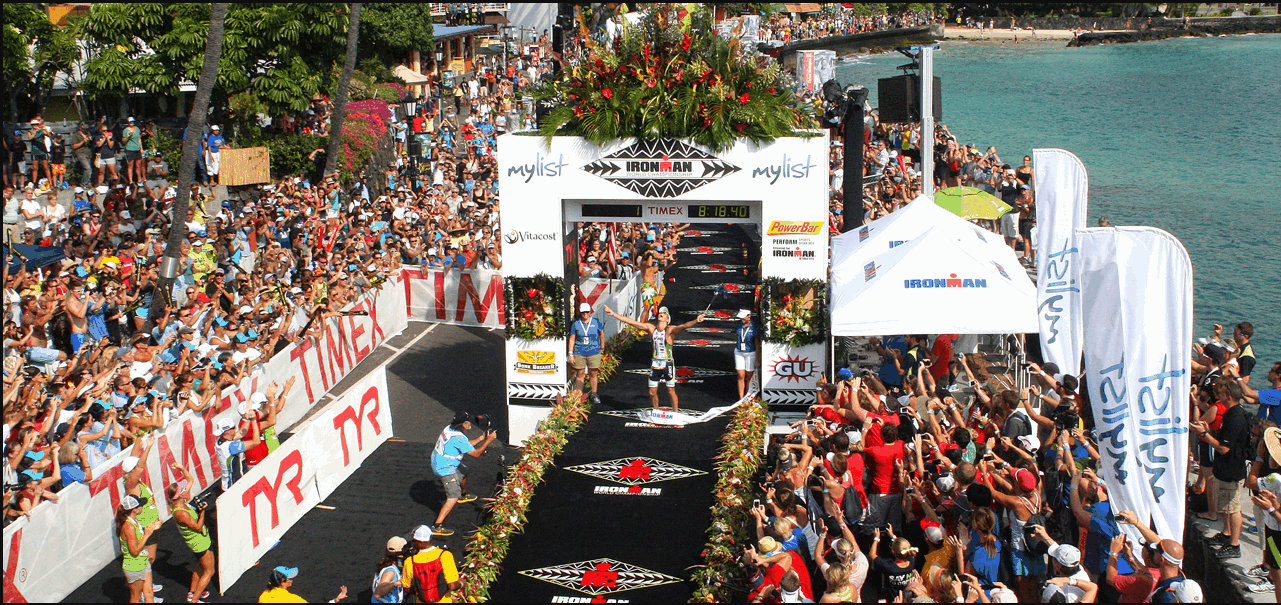
It’s that time again – #DreamingSeason. Another Ironman World Championship is in the books and whether you watched the live stream or you’re waiting for the drama-enriched NBC version of the race, chances are you’ll get that little tingle down your spine Read >
Why coaches should learn to code.
Part 2: Which language should I learn?
Alan Couzens, M.Sc. (Sports Science)
Oct 3rd, 2017

It’s been more than a year since I wrote my first post on “Why coaches should learn to code.” It turned out to be a bit of a controversial post. Some thought I was under-valuing, or even overtly disrespecting, the 'gut feel' methods of 'old school' coaches.. Read >
Knowing your individual sweat rate:
A calculator for hot-weather races
Alan Couzens, M.Sc. (Sports Science)
Sep 19, 2017

When racing in hot environments (e.g. Kona :-) a key performance limiter is your ability to dissipate heat. No matter the size of the engine you have built, if you cannot keep said engine cool, it won't be of much use to you in a hot race!
One of the most important ways that our body 'keeps the engine cool' is via sweating. In a previous post, I broke down the relative contributions of the various mechanisms for ditching the heat that our bodies produce and showed how evaporation contributes significantly.
What is the optimal periodization structure for Ironman?
A machine learning answer to an age old question
Alan Couzens, M.Sc. (Sports Science)
Aug 7, 2017
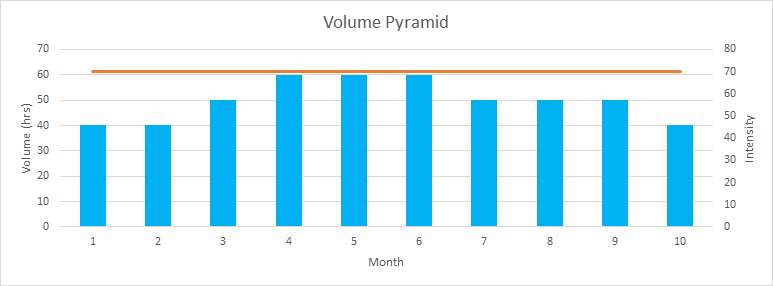
Nothing elicits more confusion around triathlon training than that magical word – periodization. What does it mean? At it’s root, it’s definable enough – break the training cycle up into periods. But beyond that, confusion and conflict abounds. What’s the optimal duration of each of the respective periods? What is the optimal content of each of the ‘periods’? And what is the best order of the ‘periods’?...
Altitude Training (& Racing)
Alan Couzens, M.Sc. (Sports Science), Gordo Byrn, Justin Daerr
Aug 1, 2017
I've received quite a few questions of late from athletes who are curious about implementing altitude training in their preparation. Perhaps inspired by tweets like the following..:-)
Great overview of @romainbardet & @AG2RLMcyclisme multi-year altitude & perf data & why repeated exposures required: https://t.co/ZMTDXJegpB
— Trent Stellingwerff (@TStellingwerff) July 15, 2017
The fact is that elite athletes across the gamut of endurance sports have been using altitude blocks in their preparation for many years. I was first exposed to this...
How many watts did you put out on today's run?
A run power calculator for triathletes
Alan Couzens, M.Sc. (Sports Science)
July 5th, 2017

About 5 years ago, I built a little calculator that gives an athlete an estimate of equivalent bike power (in watts) for a given running pace. It's been one of my most popular calculators, especially so given the growth of 'run power meters' over those 5 years but with one obvious shortfall: It assumes a flat course! So, a much belated update: I've updated the calculator to include the option to input a course elevation gain.
Of course, there are many ways that you can use this tool in your training and racing. However, one of the most useful applications, in my experience, is in assessing race execution...
How many days will you spend injured this year?
A predictive model for endurance athletes
Alan Couzens, M.Sc. (Sports Science)
May 30th, 2017

In my last post, I addressed the question: Is elite sport healthy? Avoiding a knee-jerk response to the question, I took a look at what my own data had to say on the issue. Specifically, looking at whether my athletes training at the highest levels were significantly less healthy/significantly more injured & ill than athletes training at lower levels.
While, I did find a general trend towards higher levels of injury in the higher load athletes in my sample, I also found that there were a number of factors apart from load that play a significant effect on the overall health risk of training.
Is high performance sport healthy?
Rates of injury and illness in high performance athletes
Alan Couzens, M.Sc. (Sports Science)
May 23rd, 2017

“A ship is safe in harbor but that’s not what ships are for”-William G.T. Shedd
It has been an interesting week. Stu McMillan threw the proverbial cat among the pigeons with this tweet…
A tweet like this carries a little more weight when it comes from somebody who spends the bulk of their lives in this elite sport that they’re deeming unhealthy!
And I wasn’t the only one whose mental gearbox was pushed up a gear. Brad Stulberg convened a virtual round table to offer thoughts for a coming Outside magazine piece....
The hidden benefits of employing an A.I. 'assistant coach'
Alan Couzens, M.Sc. (Sports Science)
May 3rd, 2017

About a year ago, I wrote a post entitled “Why Coaches Should Learn To Code.” The post obviously struck a chord with quite a few coaches out there, becoming one of my most popular and spurring a good number of follow up inquiries from coaches all over the globe.
In that post, I outlined some of the benefits that I was finding as someone in a non computer related field (coaching) who decided to learn to code & apply some of these basic programming skills to my daily coaching life. Benefits like being able to quickly ‘query’ my database of athlete training files to ask any questions of the data that my curious brain could come up with! 😀
When it comes to Periodization,
'Maintenance' isn't a dirty word!
Alan Couzens, M.Sc. (Sports Science)
April 25th, 2017

"He who stands on tiptoe does not stand firm. He who rushes ahead doesn't get far"
-Lao Tzu
As you all know, I’m a huge fan of performance modeling. The widespread incorporation of the performance modeling research of Bannister, Morton, Busso & co. in training software & web applications has brought the benefits of dose-response modeling to the masses. For example, Training Peaks now offers all athletes the ability to keep ongoing track of their ‘performance management metrics’ via the PMC chart (located on your athlete dashboard)....
Using VO2 Scores to Benchmark Performance in Triathletes
Alan Couzens, M.Sc. (Sports Science)
Updated April 6th, 2017
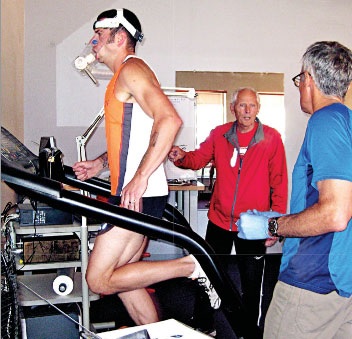
The task of testing is integral to the whole training process. After all, training is a means to an end and, at least for endurance sports, a large part of that 'end' is higher and higher levels of fitness. In short, you want to know that the training is working to make you a fitter athlete(!) and the only way to do that is to test!
There are many ways to test to see if your training is making you better. There are lab tests that use lactate curves or gas exchange analysis to monitor specific physiological changes over time. There are field tests, such as Joe Friel’s 30 minute TT or Andy Coggan’s CP5/CP20 tests to approximate the athlete’s “Functional Threshold” and there are races! All of these tests have one thing in common: they hurt!
Finding your “perfect match” in a coach.
Alan Couzens, M.Sc. (Sports Science)
March 17th, 2017

OK, so you’re on the hunt for the best coach around. The coach with the “body like Arnold and a Denzel face” Oh wait, that was Salt ‘n Pepa. But the same principle applies. To quote a much better song - You want it all and you want it now!
Well, here is an important reminder: Coaches are human!
I know, right, surprising :-) Human - with the whole range of different personalities, strengths and weaknesses that you will find across any population sample.
The interesting (& kind of neat) thing about coaching as a profession, especially in modern times is that it is such a broad 'job' and it can mean very different things to different people....
Ideal height weight ratios for Ironman triathletes
Alan Couzens, M.Sc. (Sports Science)
March 2nd, 2017

The start of the New Year is a time of thinking ahead, of setting resolutions and goals for the year ahead. If my gym traffic is anything to go by, for a lot of folks, these goals are fitness, & probably more specifically, body comp related. But this area of concern isn’t limited to Johnny Bagodonuts and his fellow January warriors. We athletes are just as susceptible to overindulging a little over the winter months and arriving at the New Year with a few extra pounds of fat and guilt. These feelings lead to questions – just how out of shape am I? What weight should I be – both in a ‘training weight’ and ‘race weight’ sense? I’ve written some in the past on the importance of carrying a little extra weight (& muscle) during the training season, but what of race weight goals? What sort of numbers are ‘ideal’ for Ironman triathletes?
Why Tall Swimmers Have An Advantage
Alan Couzens, M.Sc. (Sports Science)
Jan 30th, 2017
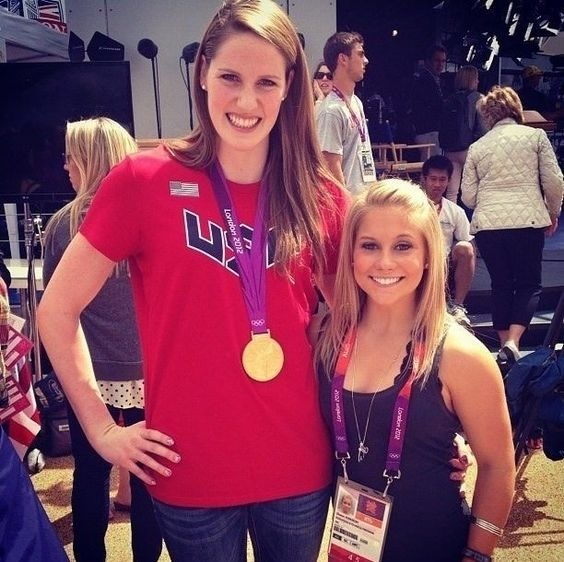
Horses for Courses – Gold Medal Swimmer, Missy Franklin (6'2") & Gold Medal Gymnast, Shawn Johnson (4'11")
As we get a little deeper into EC’s annual swim challenge, the lats get sore, the paces slow and the reflections start…
Coach, if I’m putting so much time into swimming, why are my swim splits still so slow? Why do I suck in the water? The answer is, it might not be your fault!
Have you ever wondered why Olympic sailing competitions divide boats into classes based on length?
You don’t see 12 foot dinghys lining up against 12 meter super yauchts for the same reason that you don’t see flyweights lining up against heavyweights in boxing – they’d get their proverbial butts kicked!
Similarly, if you look at the boats lined up in a rowing regatta, how come none of them look like the squat, wide little things that we used to row around the pond on?
Using machine learning to predict (& prevent!) injuries in endurance athletes: Part 1
Alan Couzens, M.Sc. (Sports Science)
Dec 12th, 2016

In previous posts I’ve talked a lot about performance modeling. I’ve investigated different ways that we can assess the individual ‘dose->response’ relationship or, more specifically, how we can work out just “what it takes” for a given athlete to reach a given performance level. In this post, I showed how we can use machine learning techniques (specifically neural networks) to improve on some of the current 'dose->response' performance models that, given recent advances, are largely out-dated. I suggested that we can find significantly more predictive accuracy by adopting models that look at the independent impact of volume & intensity rather than wrapping these variables into one ‘training stress’ metric.
But there is another addition to the current performance models that is far more important and has the potential to be even more powerful in its application than load->fitness modeling...
Season Planning: Part 4: Determining Volume & Intensity
Alan Couzens, M.Sc. (Sports Science)
Updated: Nov 17th, 2016

“Extreme volume in music very often disguises a lack of actually important content.”
- Michael Tilson Thomas
In the last article that I wrote on season planning, I offered some thoughts on the optimal way to plan your training stress to have you arriving at your goal performance level. In the article prior to that, I talked a little about the way that I phase an athlete’s year to optimally address their personal weaknesses. In this final installment, I’m going to bring those 2 concepts together and show how these elements go into determining the actual training volume and intensity that we plan for each week
I signed off the previous article with a chart showing both TSS per week and phasing of the Annual Plan for a hypothetical athlete. This is shown below….
Endurance Physiology 101: The Basics.
Alan Couzens, M.Sc. (Sports Science)
Updated: Nov 2nd, 2016

This is an updated version of a 2006 article that I wrote for the old Endurance Corner website.
In preparation for the launch of the official Endurance Corner website (stay tuned), Gordo has asked me to compile a couple of concise, core articles that will give our readers a background in the exercise physiology behind some of the triathlon terminology that we use and the training philosophy that we espouse. This is the first of those core articles.
If you've been involved in endurance sports for any period of time, you've probably come to realize that there are a myriad of terms across training systems - functional threshold, aerobic threshold, lactate threshold, etc. - some with direct physiological definitions, some with conflicting definitions (!) and some a little more 'fuzzy'...
Planning your season with TSS
Alan Couzens, M.S. (Sports Science)
Oct 27th, 2016
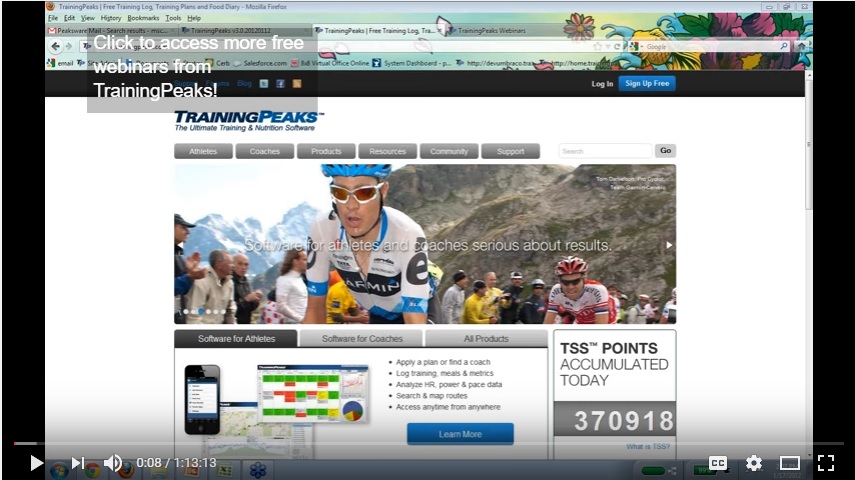
Here is a webinar that Gordo and I did a few years back that is especially relevant now, given Training Peaks' new feature of planning your season with TSS
Gordo & I discuss some of the reasons that planning via TSS as opposed to more traditional means of hours or mileage is a superior way of doing things. We provide some 'rules of thumb' that are useful in the planning by TSS process and also offer some target TSS numbers for different levels of Ironman performance. Finally, we discuss some caveats/pitfalls to watch out for when adopting TSS as a primary planning metric.
Click on the image for a direct link to the webinar...
The impact of Kona conditions on race performance.
Alan Couzens, M.S. (Sports Science)
Oct 13th, 2016
Well, another year of the Ironman World Champs in Kona is in the books. In many ways, a typically tough year on the Big Island – as the copy on the broadcast goes – one of the toughest places in the world to race. But, in this case, that’s not just sensationalism. Kona really is an incredibly tough environment to race 140.6 miles in....
Click here to read more...
Pace Kona like a Pro!
Alan Couzens, M.S. (Sports Science)
Sept 30th, 2016

Last year I wrote a little script to pull split data from the Ironman World Championship results web page so that I could visualize and tabulate split data for multiple athletes. I was interested to see how my athletes paced the race compared to their key rivals, but also, more generally, how the pacing strategy of guys/gals that do well at Kona at all levels from pro to AG differed from the bulk of the field.
I’ve provided that script in the form of an interactive chart below so that you can play around with it and see how these differences in pacing strategy played out for yourself.
Click here to read more....
What separates Kona qualifiers?
Alan Couzens, M.S. (Sports Science)
Sept 13th, 2016
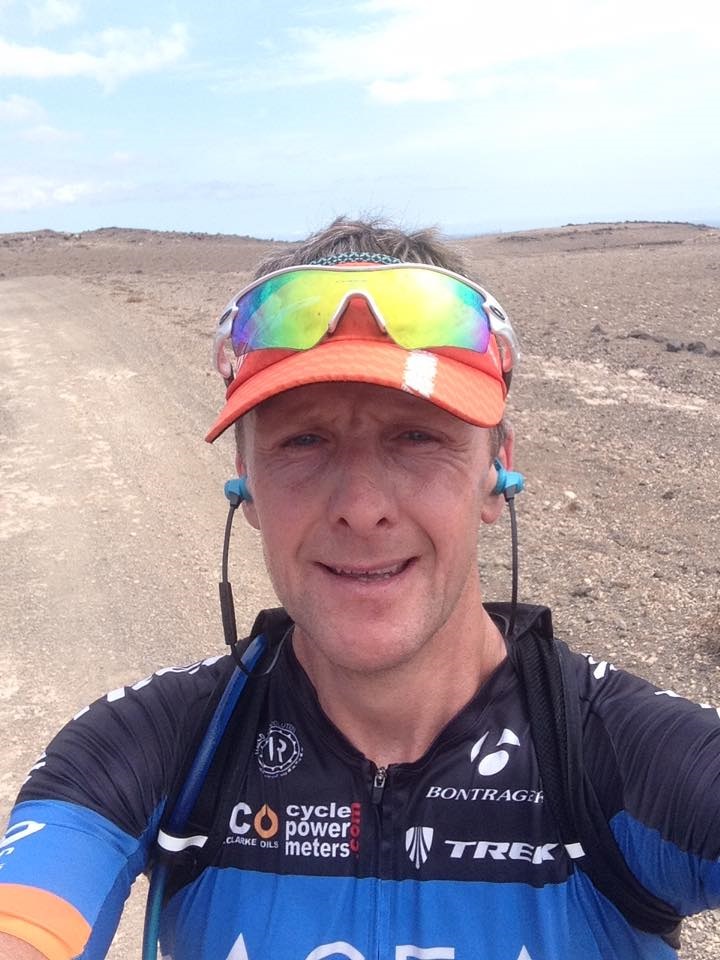
The pic on the left is of Owen Martin (one of the speedy Age Groupers that I work with) doing #WhatItTakes year after year to qualify. In this case, a massive week of training in Lanzarote. Owen is a good example of what separates the guys who qualify from those who don’t. He is someone who consistently gets the work done & (providing the Irish rain isn’t too persistent :-) has a lot of fun doing it! So, that inevitably brings us to the question, how much work?
Every year around this time, I do a bit of an annual round up of the guys on my squad who qualify for the World Champpionships in Kona. This year, I also pulled the non-qualifiers so I could do a bit of a ‘compare and contrast’. Some key stats from that analysis are shown in the table below…
Click here to read more....
How much exercise do we need to 'stay young'?
Alan Couzens, MS (Sports Science)
March 17th, 2014
The lady in the above commercial, Sister Madonna Buder, represents everything that this post is about: Longevity in (& through) sport!
As Gordo points out in this blog , the amount of exercise required for health is far less than what most 'serious athletes' are doing in their 'competitive years'. In fact, some have argued that the amount of exercise that many endurance athletes are doing is decidedly unhealthy...
Click here to read more..
Speed is a skill!
Competitive stroke rates for swimmers and triathletes
Alan Couzens, M.S. (Sports Science)
August 9th, 2016

In my last post, I looked at some target swim 'benchmarks' across the distance spectrum for swimmers and triathletes. A key component of being able to hit these benchmarks (& moving away from the dreaded 'one speed swimmer' status) is developing the ability to change pace by lifting and varying your stroke rate.
Stroke rate is the Rodney Dangerfield of swimming technique - it 'don't get no respect'. While we marvel at the stroke counts of the elite & their ability to 'hold water', there is a widely held perception that 'anyone can move their arms fast'. Can you? That is what this post is about.
Click here to read more...
Swim benchmarks for developing triathletes.
Alan Couzens, M.S. (Sports Science)
July 27th, 2016
Olympic years are my favorite. The energy, the inspirational stories, the build up. A few weeks back, we had a good dose of all of the above at the U.S. Olympic swim trials & a lot of it centered around a young swimmer by the name of Katie Ledecky.
Katie has exhibited a dominance in distance swimming that has not been seen to this point. At the trials, this dominance grew, as she extended her range of being truly competitive all the way down to the 100 meter events. This is akin to Paul Tergat going head to head with Michael Johnson in a 400 around the track. Unheard of!
For us swimming stats geeks, a neat side effect of Katie’s willingness to front up for practically every event on the card is that we get a glimpse into the pace-duration curve of a world class distance swimmer.....
Click here to read more...
Why coaches should learn to code.
Alan Couzens, M.S. (Sports Science)
July 5th, 2016

A little while back, I remember seeing a twitter poll that made my ears prick up. I wish I could remember who posted it (maybe if you’re reading this, you’ll give me a nudge), but the question of the poll was directed to coaches and it was something along the following lines…
What new skills are you going to learn this year?
- Data Analysis
- Communication/Sports Psychology
- Biomechanics
- A computer programming language
2 of the skills were data/computer related (incidentally, data analysis won by a landslide) – a good indication of where things are heading! No matter your domain, no matter your ‘job’, chances are data and computers are a part of it & if they’re not now, they soon will be to an ever increasing degree!
Click here to read more...
Know your enemy part 4: A power pacing calculator.
Alan Couzens, M.S. (Sports Science)
June 16th, 2016
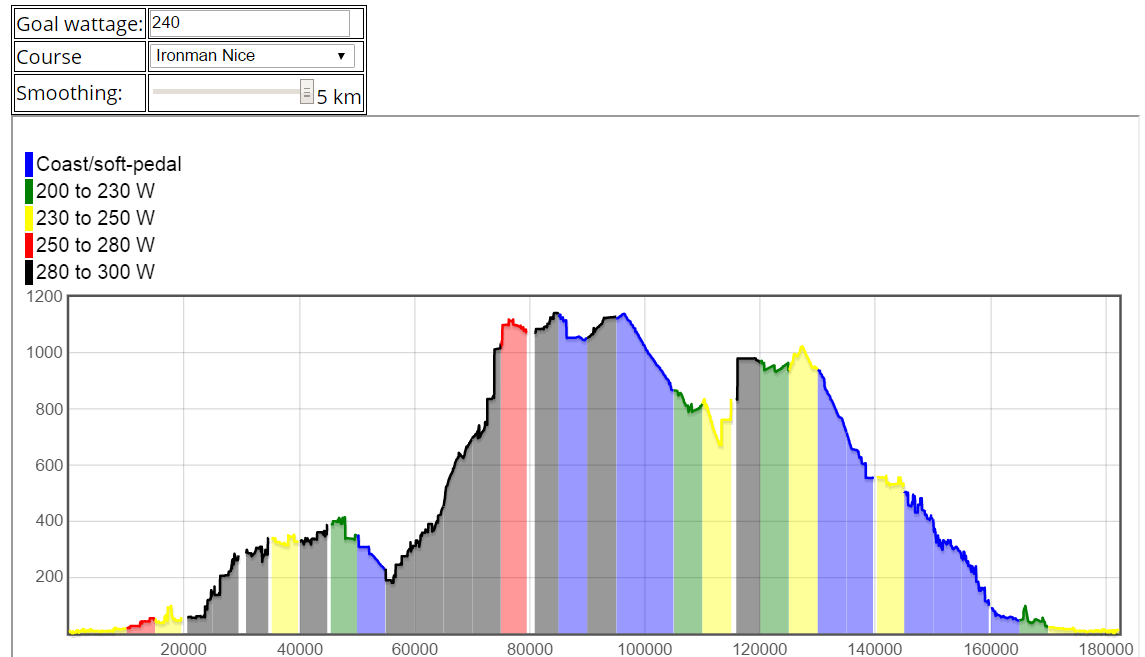
“If you know the enemy and know yourself, you need not fear the result of a hundred battles. If you know yourself but not the enemy, for every victory gained you will also suffer a defeat. If you know neither the enemy nor yourself, you will succumb in every battle.”-Sun Tzu
In the last article in my series of getting to “know your enemy”, I outlined the importance of developing a power pacing plan that is specific to the race course at hand. While fitness and developing your absolute race specific power is important, applying that power tactically to the specific requirements of the race course that you're working with is equally so. Not all distributions of a given power output will yield the same speed & in this way, the intelligent athlete can gain a distinct advantage over an athlete who paces the event in a more ad-hoc manner. Click here to read more....
Heart Rate Variability: Practical application for athletes
Alan Couzens, M.S. (Sports Science)
June 9th, 2016
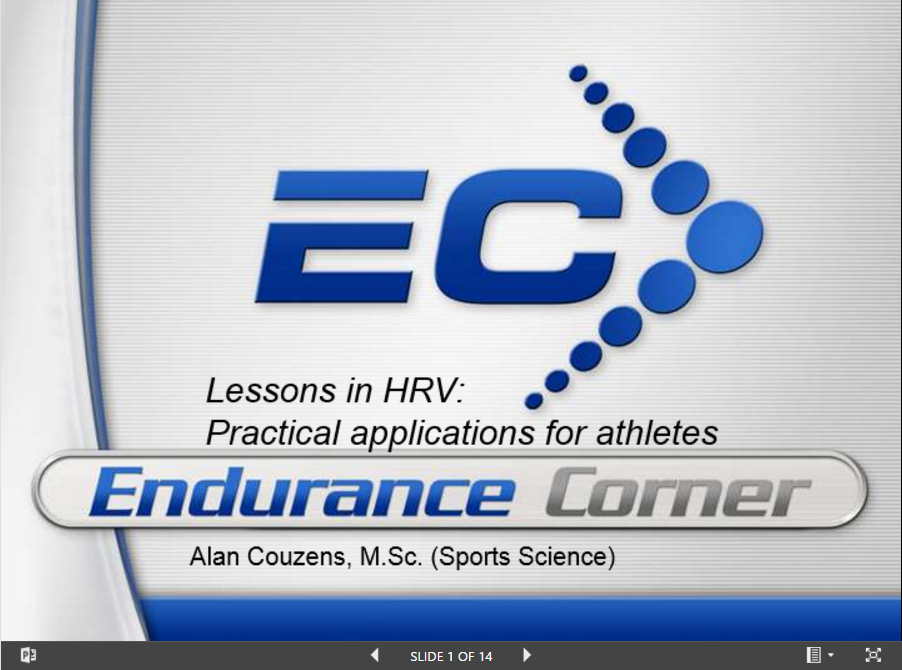
At this year's annual Endurance Corner camp in Tucson, I did a presentation on the practical application of heart rate variability for the attending campers.
‘Data Mining’ the volume vs intensity debate Part 2:
Volume AND Intensity.
Alan Couzens, M.S. (Sports Science)
June 1st, 2016

In my last post on this topic, I put on my hard hat & set about ‘mining’ my 20,000+ training files from all levels of triathlete, from novice to pro, to answer the question – which is more important, volume or intensity?
You can read that post here, but in summary – volume is winning by a nose. However, the real leader is a metric that combines the 2 together into a cumulative ‘training stress score’, i.e. the question is not so much volume OR intensity, but rather, what combination of volume AND intensity?
You might be thinking, well, with the introduction of a metric that brings together volume & intensity, (i.e. TSS) – problem solved! But, not so fast!...
Click here to read more...
Addressing your swim limiter part 3:
A cure for what ails you.
Alan Couzens, MS (Sports Science)
May 23rd, 2016
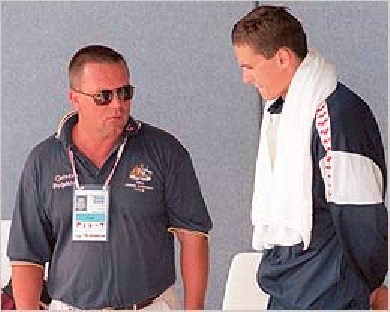
With the influx of athletes coming out of their winter hibernation to re-familiarize themselves with the aquatic medium, swimming is fresh on the mind. Actually, more specifically, the difference in paces that I see between former swimmers who haven't touched the water in several months (& have touched several bags of donuts over said months) versus those type A 'worker bees' who've been doggedly accumulating laps over the winter in an effort to improve their swimming is most at the forefront.
Triathletes, on the whole, just don't get it...
Click here to read more
Peaking the individual athlete:
The role of k2
Alan Couzens, MS (Sports Science)
May 9th, 2016

The majestic peak in the pic is the Himalayan mountain, K2 (it will make sense if you read on…:-)
I recently had a question from an athlete about the thought process behind individualizing tapers. I’ve written a little before on the general concepts behind tapering but anyone who has been involved in endurance sports for any time will confirm that optimal tapering is as much art as science and is very specific to the individual.
Well, as I’ve a habit to do, in this post I will at least attempt to frame the art with a little science…
The individuality behind the taper comes back to another factor that is also very individual to the athlete – training fatigue....
Click here to read more
Stress addiction in athletes:
Are you addicted to (training) stress?
Alan Couzens, MS (Sports Science)
April 29th, 2016

“When athletes clearly know better but cannot bring themselves to reduce their training, they threaten to become arousal addicts. Arousal addicts need their daily runner’s high (or ‘fix’) to feel good about themselves, which actually is the physical and mental state of not feeling bad due to the biochemistry of arousal. They are no longer in pursuit of excellence but rather in need of counseling and professional help. The coach might hear rationalizations from an athlete such as: “Coach, I need to train harder to improve…I don’t need or want to take (recovery) time off.” However, the grim reality is that the coach is listening to a running junkie pleading for his or her next fix.”
- ‘Distance Running’ Robert Lyden.
Click here to read more....
Are you a 'data coach' or a 'dogma coach'?
Alan Couzens, MS (Sports Science)
April 4th, 2016

It’s been a while since I’ve had a good grumble, so bear with me... :-)
As technology in sport (& the data associated with said technology) develops exponentially, the pushback associated with the discomfort of change is being felt around the social media sphere. The cries of "Well, we never had the gadgets before and we did all right…” are becoming louder by the day and adopting an almost vehement tone. Why is this?
Math is hard work!
Getting your 'fat burning' tested: Part 1.
Alan Couzens, MS (Sports Science)
Feb 29th, 2016
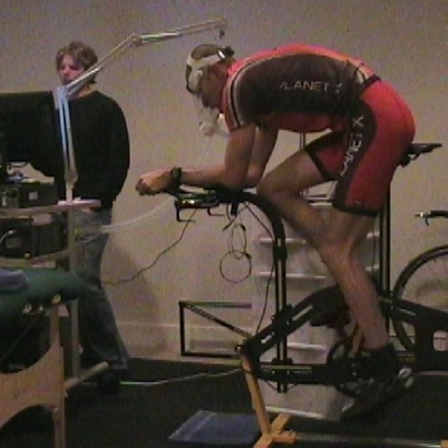
Left: The tables are turned - pro triathlete Justin Daerr checking the numbers on a metabolic test for yours truly. Note the unimpressed facial expression :-)
Thanks to my good friend, Tawnee Prazak, of Endurance Planet, I recently had the incredible opportunity to do a podcast with one of my long term idols in the applied exercise physiology game, Dr. Phil Maffetone on a subject that has been an obsession for most of my post-collegiate life – metabolic fitness or, ‘fat burning’.
Specifically, the conversation was centered around the value of metabolic testing for endurance athletes. As someone who has spent the better part of the last decade performing & analyzing these tests, you don’t get a prize for guessing on which side of the fence I sit :-)
Click here to read more...
The importance of 'gut health' for athletes.
Alan Couzens, MS (Sports Science)
Feb 10th, 2016

After listening to another great Endurance Planet podcast on ‘gut health’, I wanted to jot down a few thoughts that sprung to mind that may be of some use to serious athletes who may be struggling with ‘gut health’ issues or, on a strongly related note, slow recovery/ general health issues.
A lot of the focus on athletic nutrition has centered around the ratio of the Carbohydrate/Protein/Fat macronutrient breakdown & its impact on performance and health. I've offered my thoughts on the 'right' answer for various athletes/activity levels here. However, there is another important nutrient that is often put in the (literal) 'too hard basket' for hard training athletes - fiber.
Click here to read more...
Some thoughts on life balance:
Where is your fitness 'base camp'?
Alan Couzens, MS (Sports Science)
Jan 28, 2016

This is a bit of a random post of things that have been on my mind as I reflect on 2015 and another year of high performance coaching.
I’ve noticed a bit of a shift over the last few years in the level of athlete that I’m working with and also the intensity & drive that they bring to the table. The strange thing is, the goal level performance for the majority of the athletes I work with hasn’t changed – Qualify for the Ironman World Championships. It’s just getting harder!
My October 2014 tweet below reflects that change…
Click here to read more...
Why we spin – High cadence training for triathletes.
Alan Couzens, MS (Sports Science)
Jan 25, 2016

In previous posts I’ve sung the praises of low cadence training for triathletes. Specifically as a tool for increasing the size and strength of an athletes FOG (fast oxidative glycolytic) muscle fibers. For triathletes, having sufficient muscle for the task at hand is an important consideration. However, especially for long course triathletes, it’s not the only consideration.
Ironman is, fundamentally, a metabolically limited event. Even the best athletes perform the event at an intensity significantly below the onset of blood lactate accumulation. In other words, it is not a rise in acidity within the muscles that prevents an athlete from going faster. There is another muscular limiter at play.…
The key factor that slows an Ironman athlete down is running out of that critical fuel source – glycogen. Consequently, anything we can do to slow this process is directly beneficial to Ironman performance. Enter high cadence training…
Click here to read more...
Big Steel Challenge 2016: A Case Study
Alan Couzens, M.S. (Sports Science)
Jan 20th, 2016

Michelangelo’s David: Somatotype 1.0-7.5-2.0 (Bok, 1976) took an estimated 10,000 hours to sculpt!
Message: Keep on chipping away! :-)
The EC team recently completed our 6th Annual Big Steel Challenge. It was another successful year, with the team, as a whole moving more than 2 million pounds over the month of December.
While the usual insanity was a little more moderate this year, there were still some very impressive individual performances as well. EC Pro triathlete, Justin Daerr put up almost 450,000lbs at over 650lbs/min. You can read Justin’s thoughts here.
In a previous post, I looked at some of the objectives of our strength emphasis month(s) – namely to build a body that is more generally athletic (which also tends to lead to a body that responds better to specific training...
Click here to read more...
A basic strength week for the endurance athlete
Alan Couzens, M.S. (Sports Science)
Dec 14th, 2015

A couple of weeks back, I wrote a post about our annual ‘Big Steel Challenge’ – a strength focused block of training with a simple mission – lift as many pounds as you can over the course of a month. During the challenge, there are 2 things that we like to do – lift and talk about lifting :-) For each edition of Big Steel over the past 6 years we have kept track of the gory details of endurance athletes lifting heavy things, initially on our private EC member forum and this year, for the brave few, on Facebook. We’ve found big value in this dialogue over the years and with each year our collective understanding of strength training as an admittedly endurance–biased group has significantly increased.
It’s been said that Eskimo’s have 50 different words for snow. That same concept is clearly at play when we look at the typical endurance athlete's understanding of strength training....
Click here to read more...
Your Optimal Body Comp for Triathlon
Alan Couzens, M.S. (Sports Science)
Dec 9th, 2015
In my last post, I talked about the reasoning behind our 'big steel challenge' - an early season block of training that we insert for athletes to build (or correct for an in-season loss of) muscle mass over time
If the article content in the various triathlon magazines is anything to go by, another objective for a lot of endurance athletes at this point in the year is to decrease body fat, which energetically requires a different (competing) approach to the goal of adding muscle
This leads us to a proverbial fork in the road when it comes to body comp goals for the early season. Do we want to add or subtract? i.e. is it more important to our triathlon goals to become more muscular or less fat?
Click here to read more...
The science behind our annual 'Big Steel Challenge'
Alan Couzens, M.S. (Sports Science)
Dec 2nd, 2015
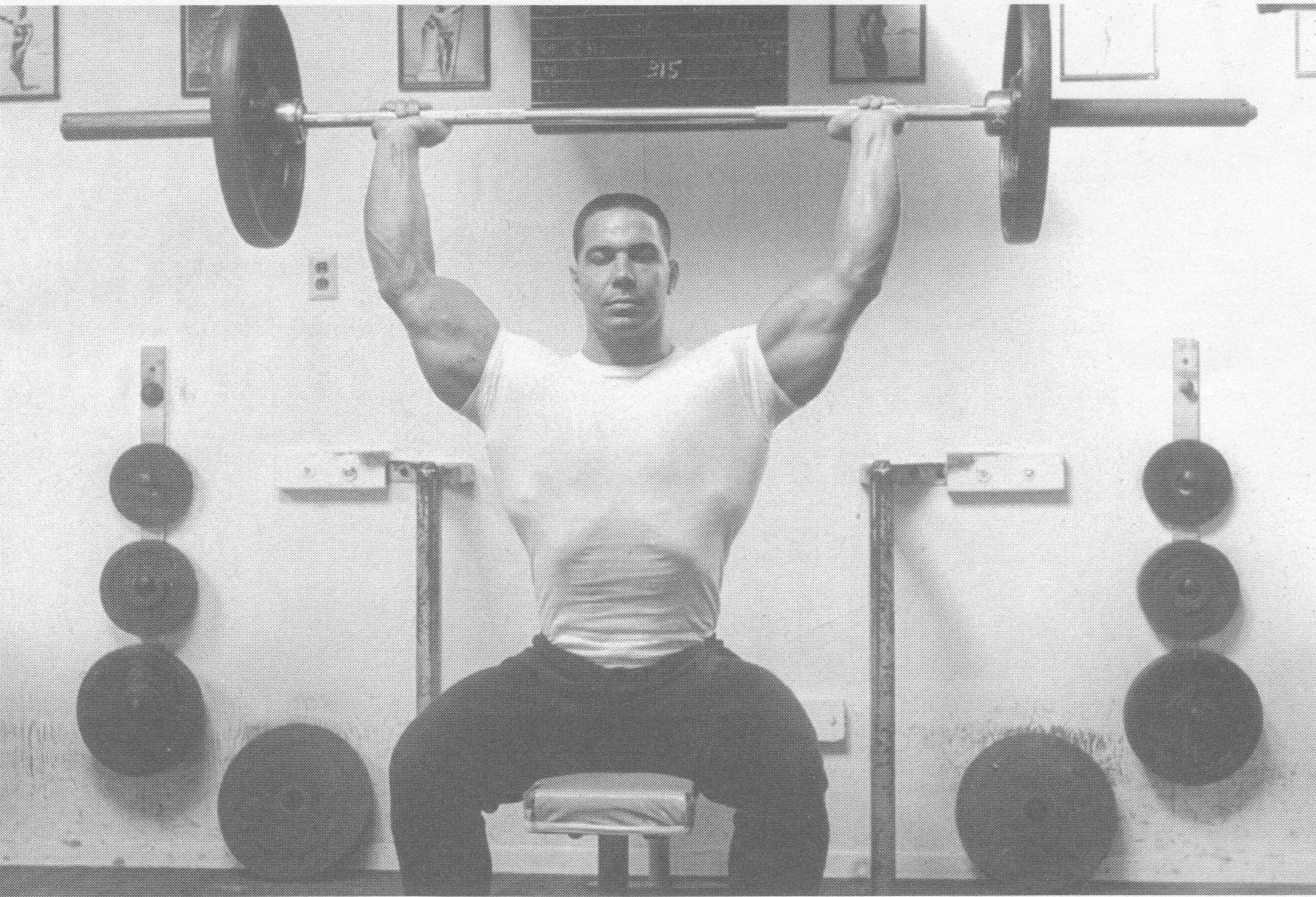
As the snow starts to fall here in Colorado and across most of the U.S., & more and more triathletes are forced indoors, that annual question starts to return – How do I keep training AND keep my sanity? :-)
While I’m certainly no expert in sanity, we do have a go-to plan of how to keep things fun and beneficial during the winter months here at Endurance Corner with a basic method that is about as simple and, at first appearance, unscientific, training methodology that you can get – we lift things up and put them down.
Yes, Winter time at EC means strength emphasis time. We have some fun with this by planning our annual Big Steel Challenge – where we encourage folks to see just how many pounds they can move over the course of a month.
Click here to read more.
Identifying your 'real world' HRV limits
Alan Couzens, M.S. (Sports Science)
Nov 25th, 2015

In last week’s post, I looked at the relationship between training load and the athlete’s ability to complete a given session. I suggested that before mindlessly planning ballistic load ramps, it is important to do a ‘reality check’ of the implications of such a ramp on the athlete’s ability to complete the training and, for that matter, the athlete's overall feeling/enjoyment of training!
In this post, I want to follow up on that by bringing heart rate variability into the conversation as a further guide to efficient and realistic session prescription...
Click here to read more..
Identifying Load Limits
Alan Couzens, M.S. (Sports Science)
Nov 18th, 2015

At this time of the year it’s easy to get carried away with the ‘no limits’ mindset. This goes along with the over-riding theme of this month on the triathlon Calendar – #DreamingSeason. Heck, I might have even contributed to it with my last post. But, before we get carried away with enthusiasm, it is important to make a realistic appraisal of those 2 key limits that can stop us in our tracks on our journey towards big goals: Time and its related counterpart – energy.
A key 'first step' in setting realistic goals for the season ahead is having an accurate understanding of the relationship between training load and fitness for a given athlete. However, it is also essential to understand the flipside of this - the relationship between training load and fatigue....
Click here to read more
The Kona Qualifier's Basic Week
Alan Couzens, M.S. (Sports Science)
Oct 29th, 2015
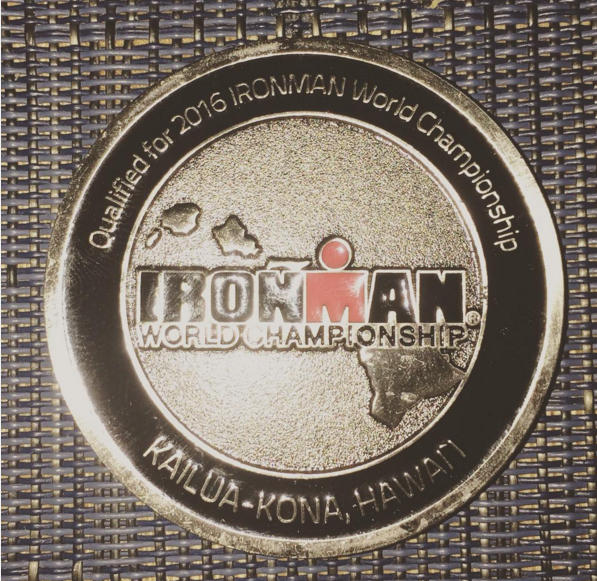
"There is a place for the 8hr a week athlete. It is the job of the coach to sell the dream to the athletes doing 10-12hrs a week and persuade them to commit to the 18-24hrs a week that they need to become truly competitive"
- Bill Sweetenham (former national coach of the Aussie swim team)
Well, here goes… :-)
Around this time of year I receive a lot of inquiries from prospective new athletes after they get fired up after following the Ironman World Championships in Kona. Maybe you were watching a buddy on the live feed & Greg Welch or Michael Lovato’s enthusiasm got to you or it reminded you of those goosebumps you had last year when Al Trautwig’s voice cracked watching the slow mo of finisher’s crossing the hallowed finish line on Alii Dr.....
Click here to read more
The impact of dehydration on run performance
Alan Couzens, M.S. (Sports Science)
Oct 16th, 2015

Can anyone guess what might have inspired this post? :-) Yes, it was a hot year in Kona this year. It’s always hot but the big island took it up a notch this time around.
From my perspective, Kona was a great year for my team, with a number of performances towards the very front of their respective age groups & a couple even nudging the podium, but in absolute terms, even very good performances were on the ‘slow’ side, especially on the run.
Click here to read more
Training Response Curves: Are you a long responder?
Alan Couzens, MS (Sports Science)
UPDATED: Sept 15th, 2015
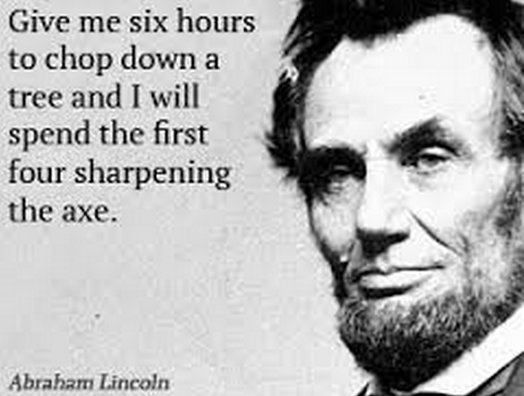
In a previous post, I talked about the different types of athletes that I work with – the fast responding ‘Naturals’, the average responding ‘Realists’ and the slow responding ‘Workers’. This is a simple way to view the way that a given athlete responds to a given training load but the reality is a bit more complicated than that, as it neglects those 2 words that are the bane of athletes the world over – diminishing returns.
In performance modelling, diminishing returns is accounted for, to some extent in the exponential nature of the dose-response model, i.e. if an athlete loads at 100 TSS/day, their CTL curve will improve rapidly at the start, will taper off around month 3 and will flatten out by month 5 (assuming the default 42 constant). But, the model doesn’t go far enough....
Click here to read more...
The Big 7: Simple mobility assessments to keep triathletes injury free
Alan Couzens, M.S. (Sports Science)
Sep 2nd, 2015
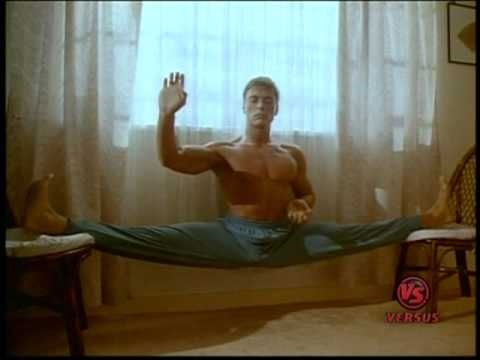
There has been a huge increase in interest over recent years in the topic of mobility work for athletes. This is due in large part to the efforts of guys like Mr. MobilityWod – Kelly Starrett (mobilitywod.com) & other brilliant minds in the field like FMS founder, Gray Cook.
If we're to be honest, it’s really only recently that we’ve even begun to question the validity of the old belief that there are only 2 types of endurance athletes – the injured & those who are about to become injured! Some of us may still even have that core belief that injuries are 'part and parcel' of being a 'serious' endurance athlete floating around the old noggin'
But, providing the athlete is smart and diligent this doesn't have to be the case...
Click here to read more
Volume vs Intensity:
'Data mining' the answer to an age-old question
Alan Couzens, M.S. (Sports Science)
Aug 19th, 2015

As key races approach, athletes get understandably antsy. The mind starts to run with thoughts on ‘what’s missing’ from the training plan. This isn’t helped by all of the mixed messages in the media and popular training texts.
* Am I doing enough “sweetspot training”?
* Is that Zone 3 stuff really ‘no mans land’?
* Should I be doing more work at FTP to boost my ‘ceiling’?
* Is my training sufficiently ‘polarized’?
Incidentally, it’s impossible to answer yes to all of the questions above!
Actually, forget the confusion provided by books and the internet, science is pretty confused too! You’ll find just as many studies touting the benefits of very high intensity training as you do studies promoting the benefits of low intensity aerobic work. So what’s the answer? Where can we go to get an honest, unbiased assessment of what methods actually work in the 'real world'?
Click here to read more
Avoiding Hyponatremia:
Specific recommendations for Ironman athletes
Alan Couzens, M.S. (Sports Science)
Aug 12th, 2015

Endurance planet posted a very interesting podcast recently on the (literally) hot topic of hyponatremia in endurance events. Dr. Tim Noakes & Dr. Phil Maffetone – 2 guys who I respect immensely, weighed in on the topic and suggested that the problem is a simple one of athletes not listening to their body and drinking to a fixed schedule instead of “drinking to thirst”.
As someone who loves a good debate, this sort of advice frustrates the “you know what” out of me. Not so much because I disagree with it but simply because it is so general that it’s hard to argue against (like when Madame Zara foretells 'some trouble in your future') &, more significantly, for the athletes we’re advising, lacks a whole lot of practical applicability. This is exemplified in a quote from the podcast…
Click here to read more
Ironman Power Calculator:
How many watts will it take?
Alan Couzens, M.S. (Sports Science)
Aug 6th, 2015
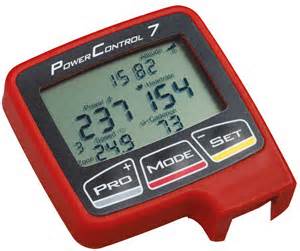
It’s that time of year – race season! For many athletes, the ‘hay is in the barn’ and the emphasis has shifted from building fitness to getting the most possible race day speed from the fitness that you have been able to build. A large part of that comes down to aerodynamics on the bike.
Hopefully by the time we reach that final lead in to the race, the coach & athlete will have a fair idea of a likely range of power output on race day. By using key sessions like metric simulation workouts & other key ‘Big Days’ under race specific conditions, assessing this number is relatively straight forward. However, tying this number in to the speed that the athlete can expect for that power is a little more complicated.
Click here to read more
How to pull HRV data from your Training Peaks account
Alan Couzens, M.S. (Sports Science)
July 14th, 2015

In my last HRV post, I outlined a few of the practical issues (esp. for coaches) in keeping track of good HRV data. Namely... a) Many of the available apps significantly decrease the sensitivity of the data, diminishing its usefulness in distinguishing recovery days b) Most apps aren't well suited to the coach's need of easily keeping track of the HRV status of multiple athletes.
At the end of the post, I hinted at the ability to pull HRV data programatically directly from Training Peaks. This is something that I've been doing now for a few weeks for me and my athletes & I've found it super useful, so I figured I'd share it with you guys (in the hope that we get even more of you in on the HRV conversation).
Click here to read more...
Periodization in accordance with your natural bio-rhythms:
Art meets science
Alan Couzens, M.S. (Sports Science)
Jun 10th, 2015

“I’ll ride the wave where it takes me” – Pearl Jam ('Release'.)
There was a great article on the McMillan speed blog a couple of days ago on the development of periodization over the years that I referenced/linked to in a tweet...
"Periodization should be based on individual biological rhythms not a selection from a menu of models http://t.co/QKQmHCR1cI"
Alan Couzens (@Alan_Couzens) June 7, 2015
The author, Matt Jordan suggested that the evolution of periodization in coaching has resulted in a movement away from the talk of theoretical models and towards a process of “biological problem solving” for the individual athlete... Click here to read more
A quick and easy HRV calculator
Alan Couzens, M.S. (Sports Science)
Jun 5th, 2015

In previous posts, I’ve offered a few different ways to gather HRV data. These range from the complex “all the bells and whistles” Kubios to the various app options which often simplify the data into one (often undefined) HRV ‘Score’. I have personally found that gathering good ‘pure’ (i.e. not proprietary) data from multiple athletes relatively quickly to be a challenge.
My biggest issue with the bulk of proprietary scores (apart from an inherent distrust of folks who refuse to 'show their work') is that, based purely on experience, they lack the sensitivity to be of significant practical use. I.e. in the interests of getting nice looking, consistent scores, they've been excessively 'smoothed'....
Click here to read more....
The Science of Heat Management: How hot is too hot?
Alan Couzens, MS (Sports Science)
June 2nd, 2015
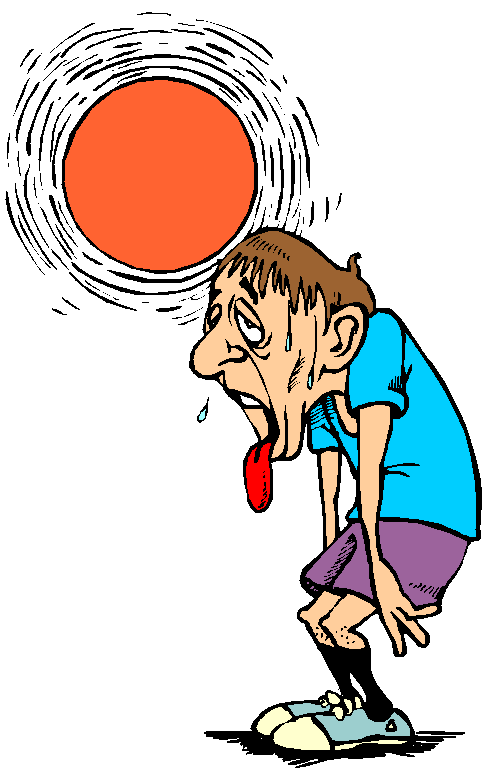
"It ain't the heat, it's the humility" - Yogi Berra
I've had a lot of chats with athletes of late focused around one topic - heat!
Ironman Texas was a couple of weeks ago and, unsurprisingly, it was hot! Beyond hot, it was hot and humid. Very challenging conditions for an event that is, by virtue of its duration, already challenging!
I was nervous well before May. As the emails came in.."Coach, I signed up for Texas as my A-Race for this year", I found myself asking one question -- why? Yeah, there were a lot of slots up for grabs given that it was a championship race this year but this 'advantage' had well and truly disappeared pretty early in the piece when we saw the caliber of athlete that was going to be toeing the line this year. Honestly, I think the metaphorically 'hot' race of the year comes down more to chance....
Click here to read more...
CTL Ramp Rates, TSB floors & Loading Patterns:
Easy as 1,2,3!
Alan Couzens, M.S. (Sports Science)
May 22nd, 2015

Joe Friel wrote a great blog last week addressing the question of CTL (Chronic Training Load) ramp rates, i.e. just how steep can we ramp an athlete’s training load before the proverbial engine stalls and the athlete comes plummeting back to earth?
I agree 100% with Joe’s statement that the 'right' answer to this is incredibly individual. Some athletes are simply more robust than others and can handle a more aggressive ramp. As luck would have it, this type of athlete also typically needs an aggressive ramp to keep up with the more ‘talented’ (but also more fragile) ‘natural’ athlete who is easily broken with an overly aggressive approach.
Click here to read more...
Exercise as therapy
Alan Couzens, M.S. (Sports Science)
May 13th, 2015

One of the less considered (and less talked about) aspects of endurance sports is the use of training/exercise as psychological therapy. History is littered with top level athletes who began their athletic journey by literally “running away from” psychological demons, be they internal or external.
This drive towards endurance exercise as an outlet has powerful neurochemical roots. In the right dose, endurance exercise can significantly increase serotonin levels and boost vagal tone – something that studies have shown to be consistently low in the chronically depressed (e.g. Rechlin et al., 1994)
A slightly different ‘dose’ can significantly decrease levels of circulating cortisol & the anxiety that comes with an over-excited sympathetic nervous system – a measure shown to be high in those with anxiety and panic disorders (e.g. Gorman & Sloan, 2000)
Click here to read more...
Overtraining - The Next Level:
Using HRV to get the most 'bang for your buck'
Alan Couzens, MS (Sports Science)
Feb 2nd, 2015
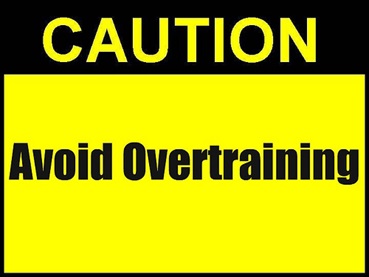
This is part of a 5 part series on using Heart Rate Variability to guide your training. You can find part 2 here, part 3 here, part 4 here & part 5 here.
In previous articles I’ve looked at overtraining and some of the simple tests that you can use to detect it. In this piece, I’m going to turn it up a notch, both in the sophistication of testing explored and in just how broad we make our definition of ‘over training’.
When we think about it, over training means, quite literally, doing more training than is required to reach a given level of fitness or result. In other words, it is not quite as ‘black and white’ as popularly believed. An athlete may well and truly be over-training before he is relegated to a vegetative mess who can’t make it to practice in the morning....
Click here to read more...
'Sensible Crossfit for Endurance Athletes'.
Alan Couzens, MS (Sports Science)
Dec 10th, 2014
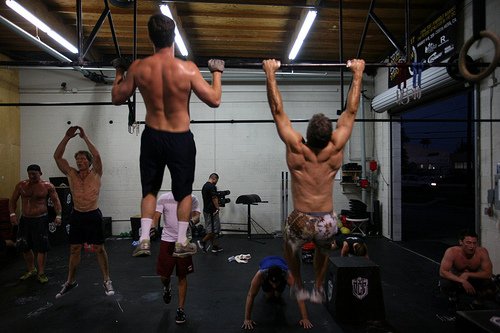
This past weekend, Endurance Corner hosted our annual coaches clinic. I love these opportunities to get coaches together to learn. While I attend these clinics as a presenter, I always feel I learn far more than I teach. For whatever reason, there is always a great variety in coaches that attend, both in the ‘way’ that they coach and the populations being coached. It becomes clear to me, after spending some time with these people just how specialized my niche is. It’s a good wake up call that there is a whole world of different athletic and coaching perspectives out there and that I will become a better coach by looking beyond my little, specialized, very homogenous world....
Click here to read more...
Are you a 'High Responder’ to training?:
Putting the performance back into performance modelling.
Alan Couzens, MS (Sports Science)
Nov 20th, 2014
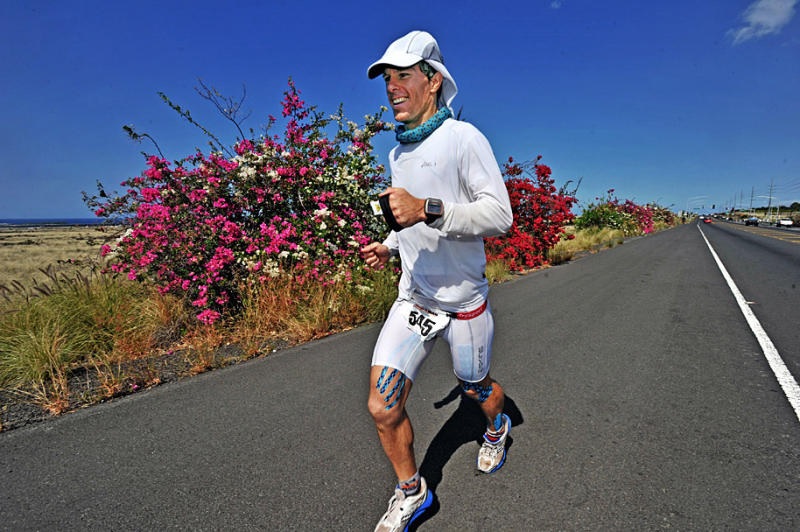
In a previous post, I talked a little about some of the different ‘types’ of athletes I’ve come across in my years of coaching. The guy smiling (in the midst of a double marathon!) in the pic above is Mike Coughlin, on his way to a 2nd place at the 2011 Ultraman World Championships. Mike is one of the fastest responders to training that I have had the pleasure to work with. Mike took himself from very average fitness levels to World Class levels for his event in the space of 16 (very hard) weeks of training. This is not a normal training response!
In that previous article, I alluded to a system of actually quantifying these differences in training response among athletes. In this article, I want to expand on that a little and give you a readily applicable practical assessment of whether you are a high responding ‘Natural’ (like Mike), an average responding ‘Realist’ or a low responding ‘Workhorse’...
Click here to read more....
The Impact of Travel on Performance
Alan Couzens, MS (Sports Science)
Nov 11th, 2014

So far in 2014, the Iron Gods haven’t been smiling favorably on my squad. It is a peculiar phenomenon but it seems that both good luck and bad luck come in batches. Last year was a bad luck year on the training side – I had athletes falling off their bikes in quick succession, picking up weird bugs & overall having a tough go of things, only to be rewarded with surprisingly strong race results. This year was the polar opposite – I had a group of athletes put together perfect builds to arrive at, honestly, ridiculous levels of fitness for age group competitors, only to have their race day performances thwarted by factors that were near impossible to predict or control.
Madame Pele was one of the Gods who seemed particularly annoyed at me for some reason this year. She opened a big gap between ‘normal’ v ‘front of the pack swimmers, turned on the winds early in the bike to widen this gap then instructed the bulk of the AG field to ride with their heads down on a Kamikaze mission centered around anyone who might be coached by me. Needless to say, rear wheels, rear derailleurs and bike splits were the obvious casualties.....Click here to read more.
Did you 'hit your burn' today?
Alan Couzens, MS (Sports Science)
Oct 27th, 2014

OK, I admit it, one of my favorite shows on TV has to be the Biggest Loser. There is something incredibly inspiring about seeing the transformation. Not so much the physical transformation but the inner transformation from someone who is leading the typical ‘office-worker’ life to, what essentially becomes, the life of a professional athlete.
Just like the life of a pro athlete, though, it doesn’t all make the highlight reel. While seeing 350lb folks race up sand dunes might make for good TV, the reality of their physical transformation goes a long way beyond this. So what is the reality? What is the process that leads to these almost unbelievable physical metamorphoses?
Every so often, a coach will let the secret slip, usually in response to plateauing weight loss “Well, did you hit your burn?”
Click here to read more...
The Benefits of a Legal Draft in a Windy Race
Alan Couzens, MS (Sports Science)
Oct 13th, 2014

With another Ironman World Championship in the books, it’s time for that all important post-race reflection.
This year’s edition of the race saw a return to the normal tough conditions that Kona is known for, i.e. heat and WIND.
The latter of these was particularly strong this year and, consequently, played a major part in the race.
In somewhat atypical fashion, winds were very strong very early in the bike, especially for the age-group male pack and were almost a direct headwind at this point. Later in the race, while remaining relatively strong, they shifted easterly into the sketchy crosswinds that the Kona bike is well known for.
Click here to read more....
What type of athlete are you? Part 2:Your Brain
Alan Couzens, MS (Sports Science)
Oct 2nd, 2014

"It is exercise alone that supports the spirits, and keeps the mind in vigor." ~Marcus Tullius Cicero
In a previous EC article, I looked at some of the physical differences that I see, as a coach, between athletes that impacts how I program for them. I broke this classification down into 3 broad categories – high responders (‘The Naturals’), average responders (‘The Realists’) and low responders (‘The Workers’). I’ve recently been reading a great book called ‘Squat Everyday’ by Matt Perryman. In it, he comes to a similar conclusion about the responder-non responder spectrum (in the world of strength training) but also adds a new term to the mix – reactivity.
The idea behind reactivity is that we are all born with slightly different (mental) ‘wiring’ that affects how we respond to a given (general) stimulus. In one corner, we have the ‘high reactives’ – folks who perceive any given stimulus as more intense than average. At the extreme end, we might find disorders such as Autism, where stimuli is perceived as painfully intense. A little further along the scale, we might find the introverts, like myself, who find high stimuli environments very taxing from an energy perspective. Folks who need frequent periods of quiet and solitude to recharge. Click here to read more
Nutritional Periodization for the Serious Ironman…
Alan Couzens, MS (Sports Science)
Sept 18th, 2014
"Don't get set into one form, adapt it and build your own, and let it grow, be like water" - Bruce Lee

In a recent post I outlined the importance of a balanced energy system development for the endurance athlete with respect to aerobic glycolysis and lipolysis and the role that a balanced nutritional approach plays. I suggested that the athlete’s diet should match the demands of their training and that if they are training at intensities requiring aerobic glycolysis, by necessity, they need glycogen to power the training!
I really can't overstate the importance of getting this balance right and the importance of nutrition to the Ironman athlete. As I said in the last post, Ironman is fundamentally a game of a bunch of (similarly) very aerobically fit athletes testing their metabolic fitness head to head....
Click here to read more.
How often should I breathe when swimming?…
Alan Couzens, MS (Sports Science)
Sept 12th, 2014

As often as you need to!
... end of blog :-)
Well, that short, simple answer is 100% spot on but I know you want more info that that. So here goes….
I saw this great article on Swimsmooth.com on the subject of breath frequency while swimming & figured I would add some quick observations on the topic.
If you ask around the elite triathlete ranks, you might be surprised by the intensity of views on this subject. Some will swear by the stroke balance that breathing every 3rd stroke provides while others (typically ex pool swimmers) will sing the praises of the extra O2 that breathing every stroke offers. So who is right?
Click here to read more...
**************************************
